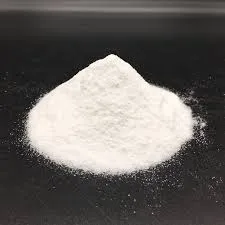
Aug . 29, 2024 08:52 Back to list
HPMC for Mortar
HPMC for Mortar An Essential Additive in Modern Construction
Hydroxypropyl Methylcellulose (HPMC) is a versatile cellulose ether that has become a key ingredient in the formulation of modern mortars. As construction techniques continue to evolve, the demand for high-performance materials has surged, and HPMC stands out as a crucial additive that enhances the properties of mortar in various applications, from traditional masonry to complex tiling systems.
Improving Workability
One of the primary benefits of using HPMC in mortar formulations is its remarkable ability to improve workability. Mortars with HPMC exhibit enhanced adhesion and plasticity, allowing for easier application and manipulation by workers. This is particularly important in tile laying, where achieving a smooth and even surface is essential. The improved workability facilitates better spreading and leveling, ensuring that the mortar adheres effectively to surfaces, even in challenging conditions.
Extending Open Time
Another significant advantage of HPMC in mortar is its ability to extend the open time, which is the period during which the mortar remains workable after it has been applied. This characteristic is especially valuable in warmer or drier environments where the risk of rapid drying can pose challenges. Mortars enhanced with HPMC allow construction professionals to work at a more leisurely pace, reducing the risk of premature setting and ensuring that tiles or other materials can be properly positioned without the pressure of time constraints.
Enhancing Water Retention
hpmc for mortar

HPMC also plays a crucial role in enhancing the water retention capacity of mortars. This is vital in ensuring that mortars maintain optimal moisture levels during the curing process, which directly impacts their strength and durability. With better water retention, the risk of shrinkage and cracking during the curing phase is minimized, leading to stronger, more resilient finished structures. This aspect is particularly important for external applications where environmental factors can significantly influence the performance of building materials.
Versatility and Compatibility
One of the outstanding features of HPMC is its versatility and compatibility with various types of binders and aggregates. It can be effectively incorporated into different mortar formulations, including cement-based mortars, gypsum plasters, and tile adhesives. Moreover, HPMC is available in various grades, allowing manufacturers to customize their formulations based on specific project requirements and application conditions.
Environmentally Friendly Choice
In an era where sustainable construction practices are increasingly prioritized, HPMC presents an environmentally friendly option. As a non-toxic and biodegradable additive, it aligns with the growing demand for sustainable building materials. The use of HPMC in mortar formulations contributes to reducing the ecological footprint of construction projects while ensuring high performance and longevity.
Conclusion
In summary, Hydroxypropyl Methylcellulose (HPMC) is an essential additive in the formulation of modern mortars, offering numerous benefits that enhance workability, extend open time, improve water retention, and provide compatibility with various materials. As the construction industry continues to pursue innovative solutions, HPMC is positioned as a vital component that not only meets performance demands but also supports sustainable building practices. With its wide-ranging applications and favorable properties, HPMC is poised to remain a staple in the future of construction.
-
Why HPMC is a Key Additive in Wall Putty Formulations
NewsAug.05,2025
-
Redispersible Powder in Decorative Renders: Function Meets Finish
NewsAug.05,2025
-
Redispersible Powder for Interior Wall Putty: Smooth Results Every Time
NewsAug.05,2025
-
HPMC’s Water Retention Capacity in Dry Mortar Applications
NewsAug.05,2025
-
HPMC Factory Contributions to Liquid Detergents
NewsAug.05,2025
-
How HPMC Factory Products Change Detergent Textures
NewsAug.05,2025







